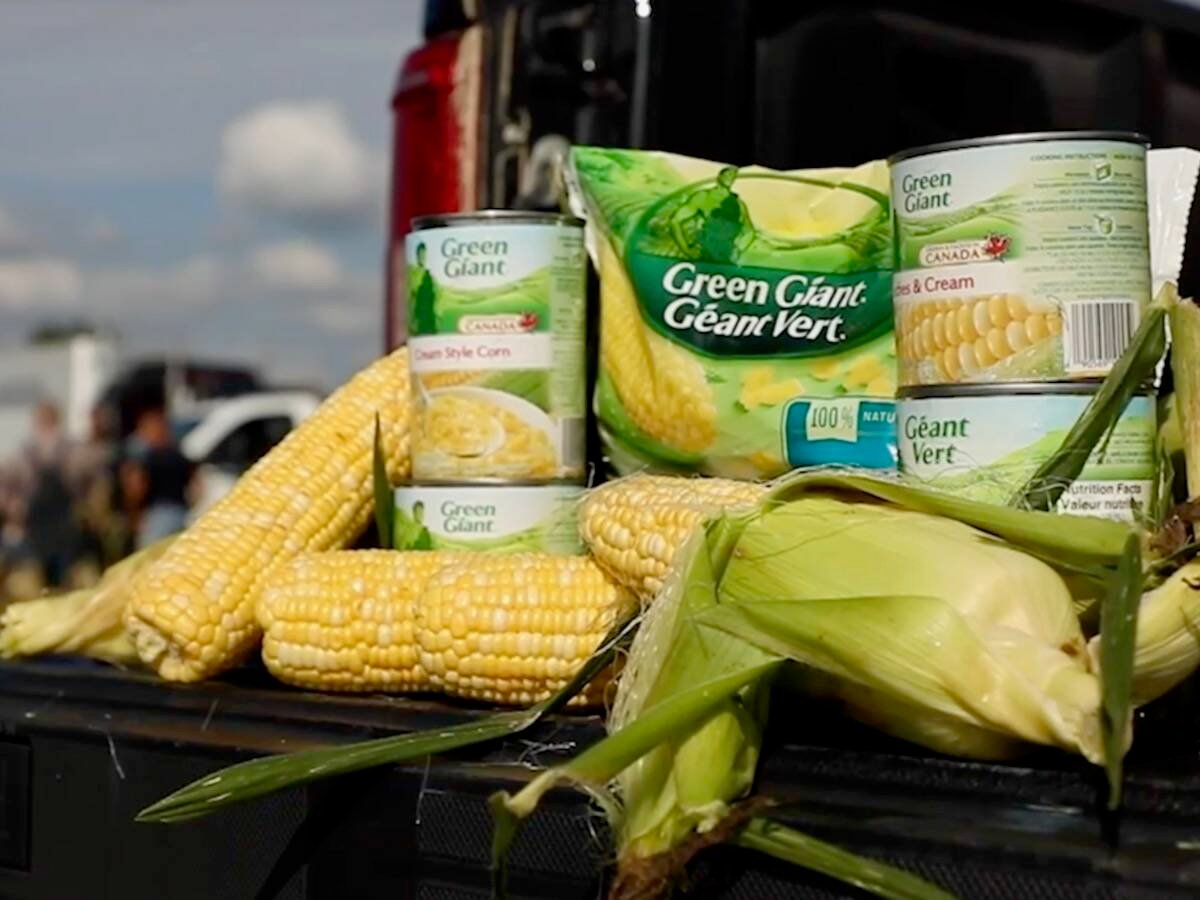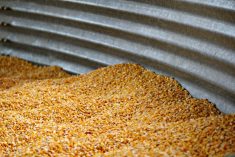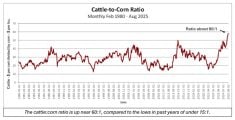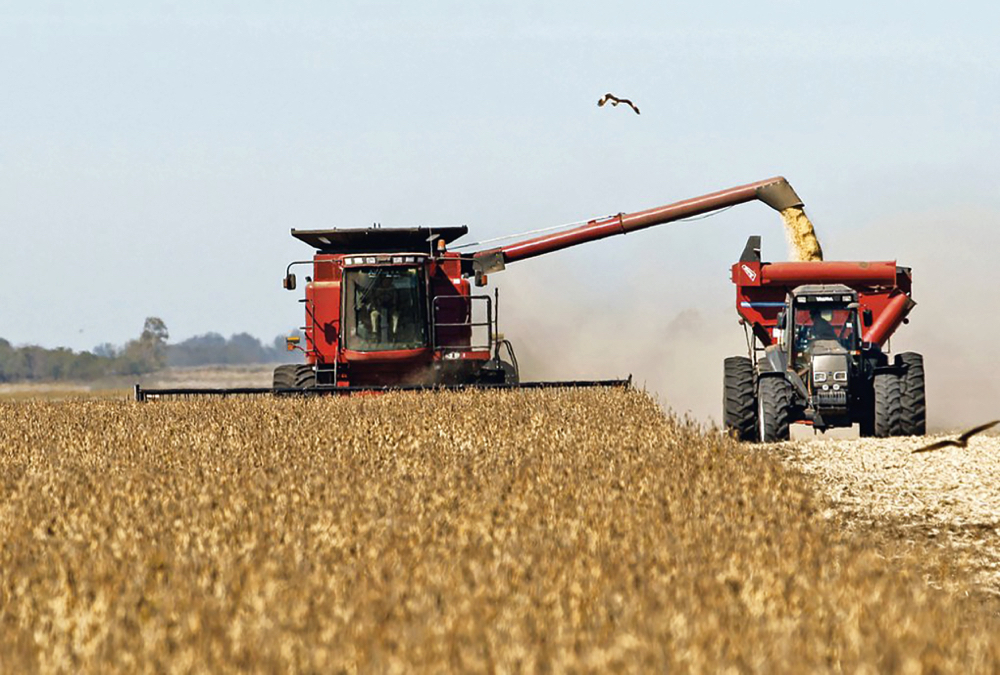There is an old saying, “the top in the market is in place when commodities make headline news.”
On May 19, The Economist warned of mass hunger. Time magazine reported that millions of people are going to starve. The Guardian’s front-page headline on May 21 was “Apocalypse Now?”
Chicago December corn futures made a high on May 16 of $7.66/bu. and at the time of writing this article was trading around $6.60/bu. Chicago December wheat made a high of $12.82/bu. on May 17 and has since dropped nearly $3/bu. November soybeans made a high of $15.84/bu. on June 9 only to drop by $1.50/bu. by the end of the month.
Read Also

Packer buys Green Giant, Le Sieur veg brands from U.S. owner
A Quebec-based processor’s deal to buy the Green Giant and Le Sieur packaged and frozen vegetable brands in Canada from a U.S. owner clarifies the status of two popular retail brands grown by Canadian farmers.
Quick look
Soybeans: Domestic demand is stronger than earlier anticipated and exports have come to a halt.
Corn: Both Canada and U.S. production is projected above five-year averages, with Canada expecting a bigger crop over last year.
Wheat: Decline in the futures markets signals there is plenty of wheat globally. Farmers should plan to store their wheat to get full value.
The North American crops are off to a great start, including those in Ontario. The media is hyping sweltering heat in certain Northern Hemisphere locations but they don’t realize that it always gets hot in summer. The Ontario growing region has received normal precipitation over the past 30 days. Temperatures have also been average. There are no extremes in precipitation or temperatures for Ontario. At this stage, we’re looking for Ontario yields to finish slightly above average.
Our contacts in South America estimate that Brazil’s second corn crop was approximately 20 per cent harvested as of June 26. In Argentina, June, July and August are the winter season. The U.S. winter wheat harvest was approximately 41 per cent complete as of June 26. At the same time, U.S. soybeans were rated 65 per cent good to excellent while the corn crop was rated 67 per cent good to excellent.
The winter wheat harvests in Europe will move into high gear during July. Russian analysts are projecting a record wheat crop. Western Canada is experiencing greenhouse conditions and above average yields are expected. The year-over-year decrease in Ukraine corn and wheat production is having less of an influence on the market given favourable conditions in other major exporters.
Inflation continues to ratchet higher. Central Banks continue to increase their benchmark lending rates in an effort to curtail overall demand. At the same time, the Canadian federal budget deficit is expected to reach $52.8 billion for the 2022/23 fiscal year. This comes on the heels of a posted $95.6 billion deficit for 2021/22. Liberal fiscal policy contrasts with Bank of Canada monetary policy. The energy supply curve for G7 countries has become inelastic due to left-wing policies that have limited production and expansion. A small change in demand has a large influence on price. This isn’t changing anytime soon.
Soybeans
Soybean futures have been under pressure over the past month but basis levels in Ontario have improved, which has limited the downside in the overall price structure. Ontario soybean stocks are expected to drop to historical lows. However, soybean crusher margins are strong and domestic demand is stronger than earlier anticipated. Domestic crushers will take some downtime for maintenance and upgrades later in August, which will cause the market to erode barring adverse crop conditions.
We continue to project an Ontario crop size in the range of 4.1 to 4.2 million tonnes. This is relatively unchanged from last year and up from the five-year average of 3.9 million tonnes. Basis levels will come under pressure during harvest given the current crop size.
Export demand has come to a halt. Ontario export offers out of the St. Lawrence are approximately US$20 premium to South American origin. U.S. offers from the Gulf are US$10/tonne premium to Brazil. The U.S. is experiencing a similar fundamental structure to Ontario, whereby domestic crushers ration demand away from export channels. The U.S. soybean crop is expected to finish in the range of 126 to 128 million tonnes, up from 121 million tonnes last year.
Chinese demand is uncertain in the short term. The zero-COVID policy has resulted in a start/stop economy. China tends to have one-third of its usage in reserve carryover from year to year, which is about 30 million tonnes. Argentina and Brazil tend to carryover 40 million tonnes from year to year. It’s only the U.S., Canada and the EU that have carryouts at minimal levels and rely on the upcoming crop to secure supplies.
The soybean market will remain under pressure during the first half of July. In early August, we may see the market incorporate a weather premium if adverse weather develops during the main flowering season. The weather forecast for much of the Midwest calls for below normal precipitation and above normal temperatures.
What to do: The soybean market tends to experience a seasonal rally from late October through February. We’ve advised Ontario farmers to be 100 per cent sold on old crop and 10 to 15 per cent sold on expected new crop production. We’re waiting for the August weather rally to price another five to 10 per cent of expected production. Otherwise, be prepared to store until late November or early December. This is when we will likely make our next recommendation.
Corn
The Ontario corn market has come under pressure due to a lack of domestic and export demand. Feedlot operators took coverage earlier in spring and this demand has been factored into the market. Keep in mind that cattle on feed inventories in Ontario trend lower during the summer and make a seasonal low in August and September. Ethanol processors also have sufficient coverage for now. On the export side, Ontario corn is quoted at US$340/tonne f.o.b. the St. Lawrence. While this is similar to U.S. values out of the Gulf, Brazilian corn is offered at US$312/tonne f.o.b. Paranagua. More importantly, French corn is offered at US$335/tonne f.o.b. La Pallice, and this is the major competitor for Ontario corn into Northern European destinations.
Canadian imports of U.S. corn are expected to reach 6.5 million tonnes in the 2021/22 crop year. The bulk of this volume is to Western Canada. Currently, U.S. basis levels in the northern Midwest are strong enough to curb truck movement north.
Statistics Canada will release its planted acreage survey on July 5. There might be some fine tuning in acreage but we continue to project a crop size of 9.7 to 10 million tonnes. This is up from the 2021 output of 9.5 million tonnes and up from the five-year average of 8.9 million tonnes.
We’re projecting the U.S. crop to finish in the range of 370 to 375 million tonnes. This is down from the 2021 output of 384 million tonnes but up from the five-year average output of 365 million tonnes. Brazilian yield reports confirm the USDA production estimate of 116 million tonnes, up from the year-ago output of 87 million tonnes. The Argentina crop is confirmed at 53 million tonnes, up one million tonnes from last year.
Currently, U.S. export offers are premium to South America, which has slowed offshore movement. Like Ontario livestock producers, U.S. feedlot operators are well covered until new crop. The scare earlier in spring caused end users to be aggressive on coverage. Unfortunately, the market is now falling due to lack of demand. U.S. ethanol processing is running at higher levels but this isn’t sufficient to sustain the price structure.
What to do: We’ve advised Ontario farmers to be 100 per cent sold on old crop and 10 per cent sold on expected new crop production. We’ll add onto sales if there is a weather rally during the main pollination period. This will be short lived because there is limited commercial demand. We’re planning to make our next sale in late October. Corn tends to put in a seasonal low in early September. Avoid selling in September.
Wheat
Ontario winter wheat production is expected to finish in the range of 1.9 to two million tonnes this year. This is down from last year’s output of 2.7 million tonnes and down from the five-year average of 2.1 million tonnes. We’re getting close to the Ontario harvest and this is seasonally the lowest price of the year. We mentioned in the previous issue that we don’t expect wheat to trade into domestic feed channels given the price premium over corn. Ontario wheat will trade into domestic and export milling markets.
We estimate domestic demand at 1.1 million tonnes, which will leave approximately 700,000 tonnes for export. The bulk of Ontario wheat exports occur in the first half of the crop year. In the latter half, the domestic market trades at a premium to export values.
We’re forecasting U.S. soft red winter production to reach 10.2 million tonnes, up from last year’s crop of 9.8 million tonnes and up from the five-year average of 7.9 million tonnes. U.S. hard red winter wheat output will likely finish near 16 million tonnes, down from 20.5 million tonnes last year. Currently, U.S. soft red winter is quoted at US$360/tonne, while French soft wheat is hovering at US$390/tonne. Ontario soft red winter is quoted at US$368/tonne f.o.b. St. Lawrence for August. The Ontario wheat market is functioning to encourage demand during the harvest period.
The European crop has held up fairly well despite drier conditions. French soft wheat production is expected to finish near 33 million tonnes, down from 35.5 million tonnes last year. German soft wheat production is estimated at 21.5 million tonnes, similar to last year’s output.
Russian wheat production is expected to reach 90 million tonnes, up from the USDA estimate of 81 million tonnes and up from the 2021 crop of 75 million tonnes. The additional production will result in an export potential of 40 million tonnes, up from the 2021/22 exports of 33 million tonnes. It appears that Russia will try to satisfy traditional markets in the Middle East and Africa. It will depend on price but the volume is there to move.
We’re estimating the Canadian non-durum spring wheat crop at 24 million tonnes, up from last year’s crop of 16 million tonnes. The U.S. hard red spring output will likely finish near 12.7 million tonnes, up from 8.1 million tonnes last year.
What to do: There is no shortage of wheat in the world, hence the recent decline in the futures market. We’ve advised Ontario farmers to be 100 per cent sold on old crop and 10 per cent sold on new crop. Wheat prices make a seasonal low in late July or early August. Prices tend to trend higher until the first week of November. This is when we will make our next sales recommendation. Wheat is one crop farmers need to store to capture full value.













